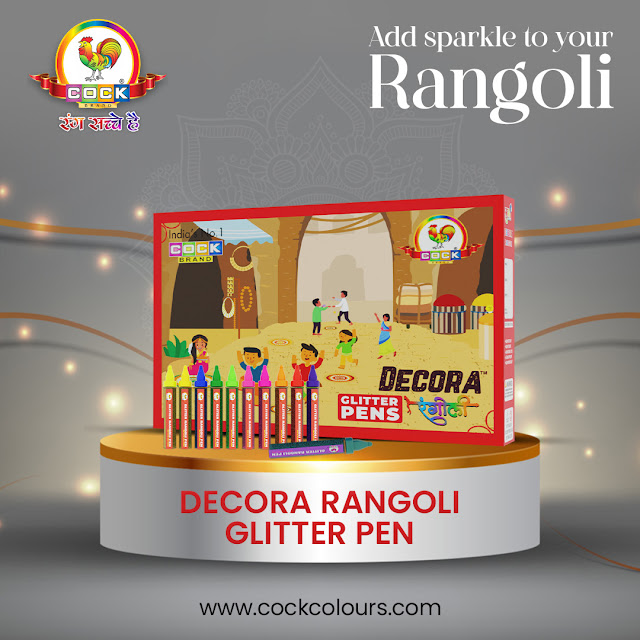Introduction
Indian culture gave rise to the traditional art of rangoli. In various parts of India and various languages, it is also known as kolam, alpona, ossa, and Guggulu.
Rangoli designs range from straightforward Diwali patterns to more intricate designs like a mandala. Traditional elements such as ground rice powder, flowers, diyas, or particular colored powders can be used to make one-of-a-kind rangoli patterns on the floor.
An essential component of celebrating Diwali is creating fresh rangoli with Organic natural colors. Each piece's design may have religious or other specific meaning to the creator, and rangoli patterns are frequently handed down over the years as family heirlooms.
How to make your own Diwali rangoli designs with Cock Colours?
1. Select your resources
Choose the materials you'll use for your rangoli first. The affordability of rangoli designs is one of their many beautiful qualities. Regardless of how much money they choose to spend, everybody may celebrate Diwali. BAll socioeconomic classes of residences have colorful rangoli. They from all walks of life can participate in this festival because people improvise and use what they have on hand.
Although many people use them, pigment powders made and explicitly sold for Rangoli painting are available everywhere. Colors like yellow and red respond well to common spices like chile and turmeric. Additionally, you might use rice powder, sand, or flower petals.
2. Choose your rangoli's style and meaning.
Next, choose the shape of your rangoli and its significance. You have a variety of possibilities for your artistic expression if you're not recreating a family design. A straightforward rangoli pattern of a flower or animal, or a more intricate depiction of a Hindu god or goddess, can be appropriate.
Lakshmi-related images are typical during Diwali. One concept is to depict Lakshmi's "footsteps" as she approaches the residence. You might find rangoli representations of other deities, such as Lord Ganesha, Krishna, Shiv, etc.
Conclusion
At last, keep in mind that even the best rangoli patterns aren't intended to remain indefinitely. Accepting that rangoli materials are temporary is a necessary step in the process because they can easily blow away in the wind or be disturbed by animals. Cock Colours are the best Holi Colors Manufacturer that produces organic colors for holi.

Comments
Post a Comment